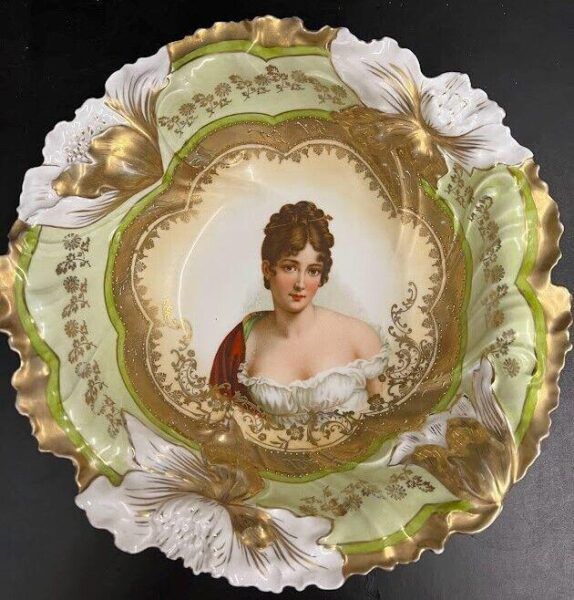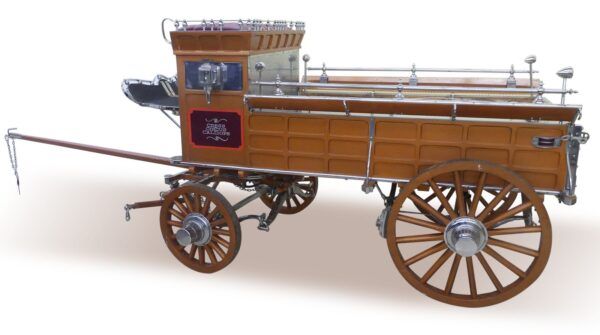#Porcelain #Portraits #Ladies #R.S #Prussia #WorthPoint
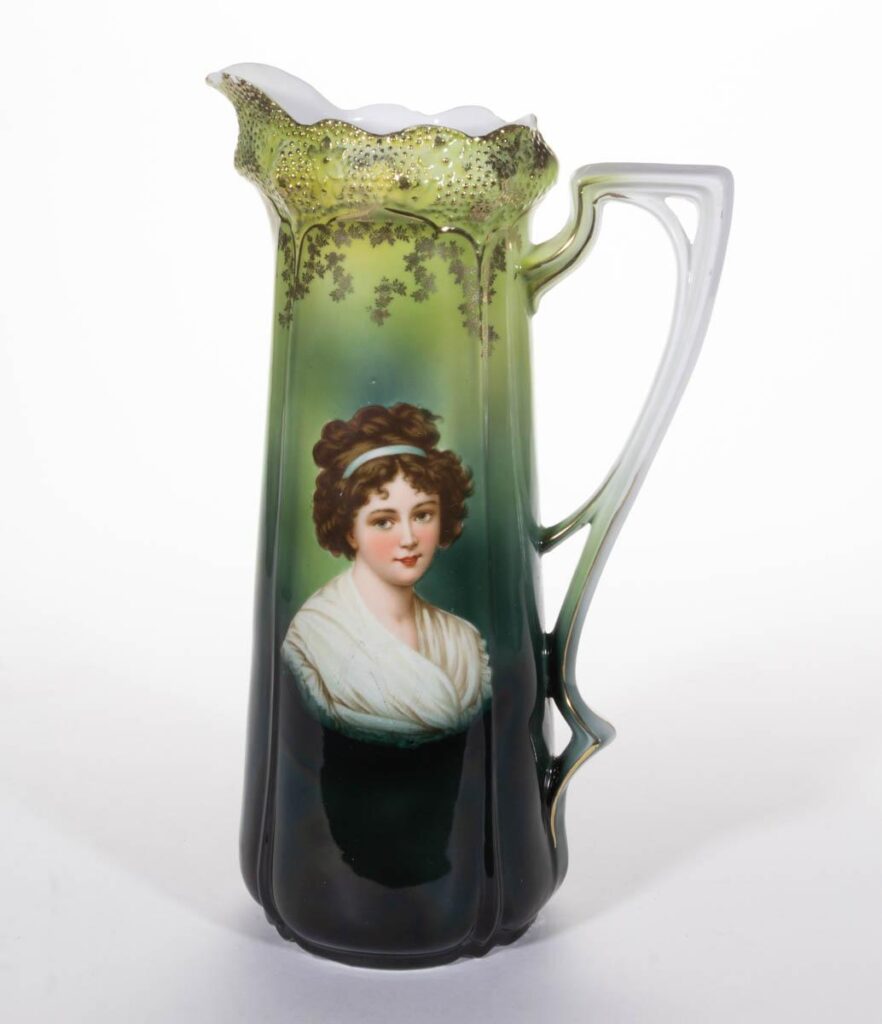
Among the favorites of R.S. Prussia (RSP) collectors are the many portrait pieces produced by Reinhold Schlegelmilch’s factory in Suhl, Germany, from about 1895 through 1905. These portraits are not hand-painted but are transfer prints used on various pieces, such as decorative bowls and fancy serving sets.
Looking at these artful depictions of lovely women, it’s hard not to wonder who they were and why they ended up immortalized on a piece of porcelain. As it turns out, some depictions like the Four Seasons that personify spring, summer, fall, and winter are just typical Victorian generalizations of a pretty face.
In many other instances, however, RSP portraits offer snippets of larger works of art painted by famed artists working during the 16th and 17th centuries. Some of the ladies in these paintings, like Countess Catherine Litta, Empress Josephine, and Queen Louise, are found less frequently, while several others were featured on RSP more often (although portraits, in general, are not considered to be common from a collector’s standpoint).
For those more frequently found portraits, a bit more is known about who they were and the clever painters who created the original artwork. My personal favorite is Countess Potocka, whose portrait is quite a bit more ambiguous than I’d anticipated. We’ll begin with a couple that are much more straightforward but nonetheless lovely.
Madame Lebrun
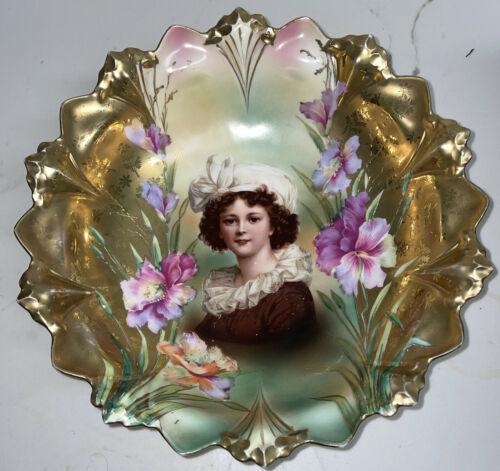
The woman shown most frequently on RSP portrait pieces is the charming Madame Lebrun (1755-1842). Her entire name was Marie Louise Elisabeth Vigeé Le Brun, and she was not only the subject of RSP transfers but also a celebrated French artist in her own right. In fact, her likeness shown on some RSP pieces is based on one of her own self-portraits where she’s wearing a white cap and looking particularly girlish. In the other version, she has a white ribbon adorning her hair in a womanlier pose. Queen Marie Antoinette was a fan of her artwork, and she is known for portraits of her royal highness as well as other portraits of the French elite. As an aside, many different porcelain factories incorporated popular works by Madame Lebrun into their designs during the late 1800s.
Madame Récamier

Jeanne Francoise Julie Adelaide Bernard Récamier (1777-1849) is another attractive woman depicted on many RSP portrait pieces. She was known in her day as a socialite who hosted French aristocrats and dignitaries in her well-appointed home. Women like Récamier—who maintained elegant salons for their soirees—were famous during their time, although not for any ambition other than being beautiful and skillful at entertaining. Many suitors found her to be worthy of pursuit, including Napoleon’s brother. Her portrait on RSP pieces is based on a work of art by Francois Gérard (1710-1837) called “Portrait de Juliette Récamier, née Bernard,” for which he was famous. As a highly regarded painter, Gérard completed works for Napoleon and became a baron by the decree of King Louis XVIII in the early 1800s.
Countess Potocka

This one is a bit of a mystery—a tale of two Potockas if you will. In The Collectors Encyclopedia of R.S. Prussia by Mary Frank Gaston, the author wrote that portrait pieces featured in her book depict Anna Potocka (1758-1814), a Polish countess and writer. However, a very similar portrait with her hair tied back with a ribbon appears on the Philadelphia Museum of Art’s website, describing the subject as Countess Sophie (Zofia) Potocka (1760-1822). That one is a copy of an original pastel portrait, possibly by Vigée Le Brun (who did complete many portraits of aristocrats as noted above, including another painting of Anna Potocka held in the Metropolitan Museum of Art’s collection).
The original artwork for the portrait copied on RSP pieces was apparently decimated in Berlin, Germany, during the battles of World War II. Many renderings of that famed work were done by other artists in oil and pastels in the late 1800s, and there are slight variations in the hair and face from version to version. Still, is it Anna Potocka or Sophia Potocka decorating RSP? Maybe reading the Memoirs of Countess Potocka–which chronicles the life of Anna Potocka and has a similar illustration to the RSP transfer on the cover–will reveal more clues. As of now, though, I can only refer to her generically as Countess Potocka.
Madame Henriette and Madame Adelaide
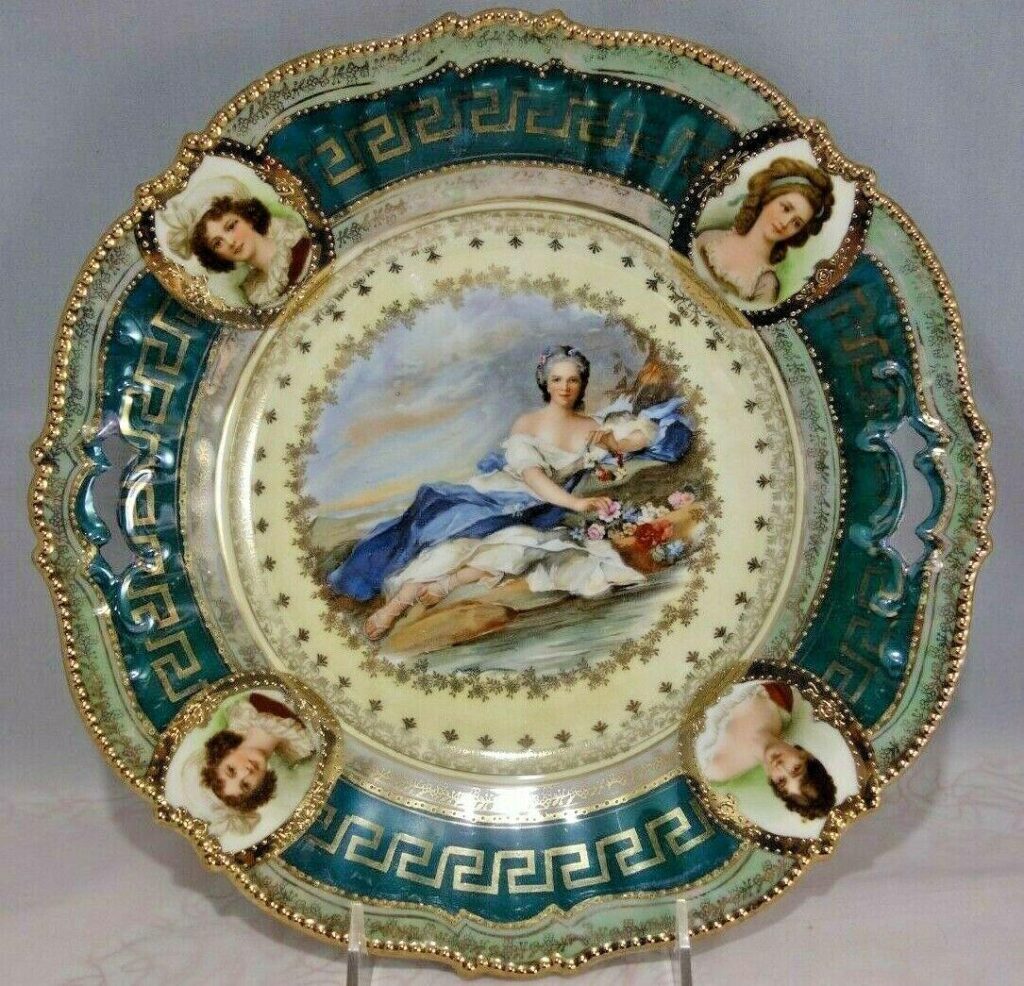
While these aren’t as prolific as some of the other ladies found on RSP, they are lovely, nonetheless. These portraits are based on paintings by an artist from France named Jean-Marc Nattier (1685-1766). The specific works are “Madame Adelaide as Diana” and “Madame Henriette as Flora.”
On the pieces featuring Diana, she’s shown resting after the hunt with a bow in her lap. Flora, the Italian goddess symbolizing springtime, is depicted on RSP pieces reclining with a floral garland in her hands.
Not much is known about the actual models for these two portraits, unfortunately, but that doesn’t make collectors admire them any less than all the other lovely ladies of R.S. Prussia.
Pamela Siegel is a freelance writer and author who has been educating collectors for more than two decades. In addition to three books on topics relating to antiques and collectibles, she frequently shares her expertise through online writing and articles for print-based publications. Pamela is also the co-founder of Costume Jewelry Collectors Int’l (CJCI) and the proprietor of Chic Antiques by Pamela.
WorthPoint—Discover. Value. Preserve.

